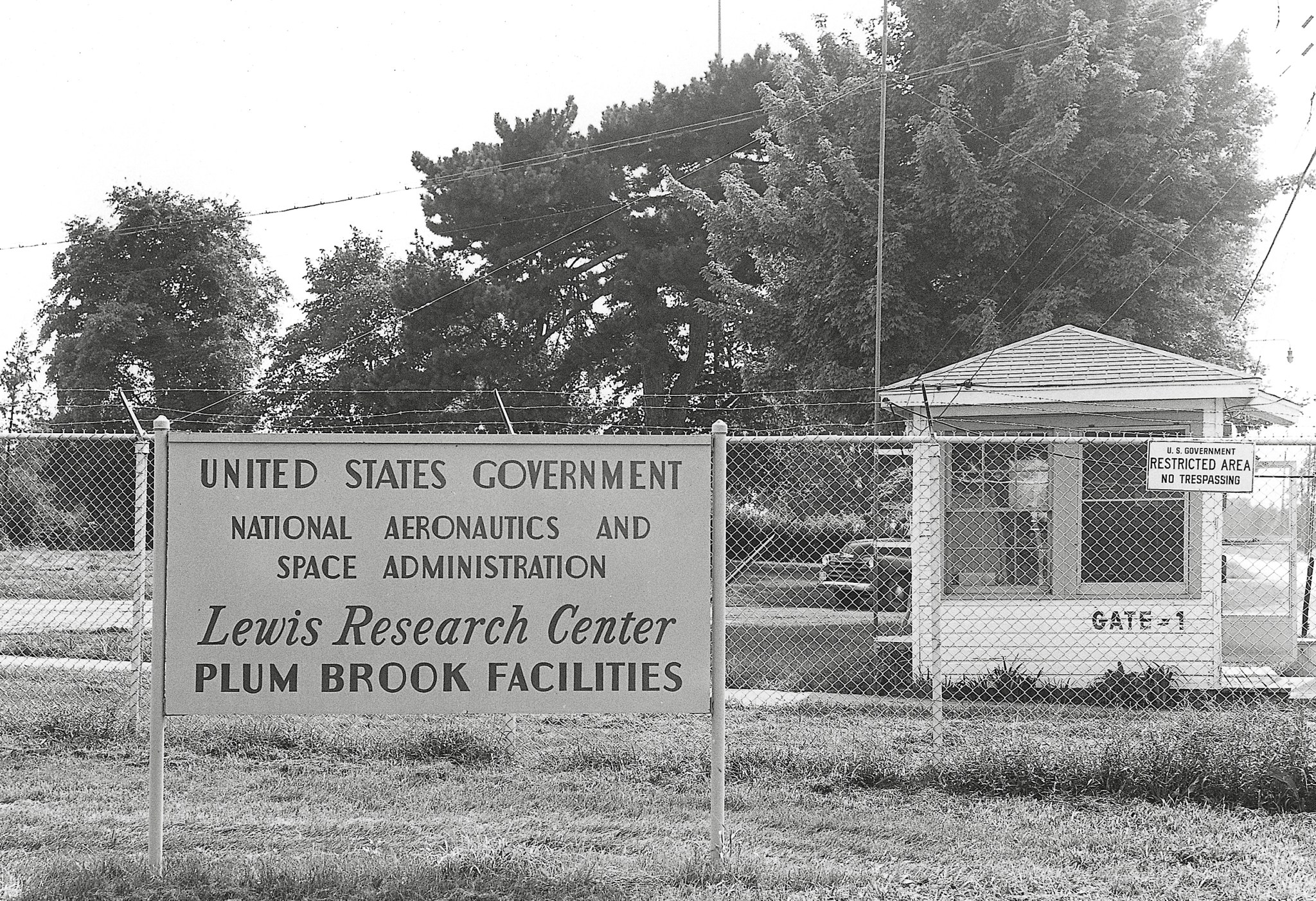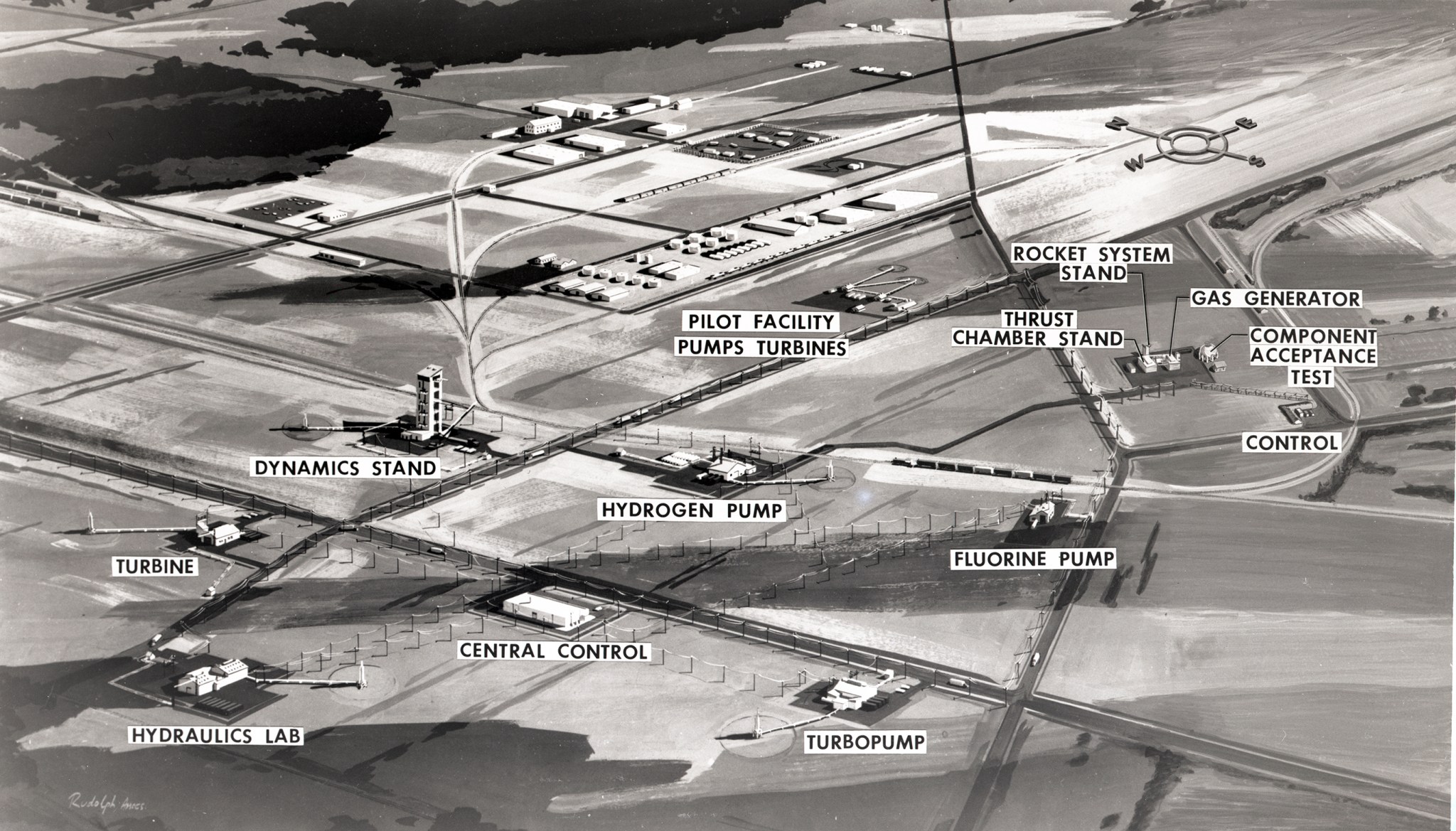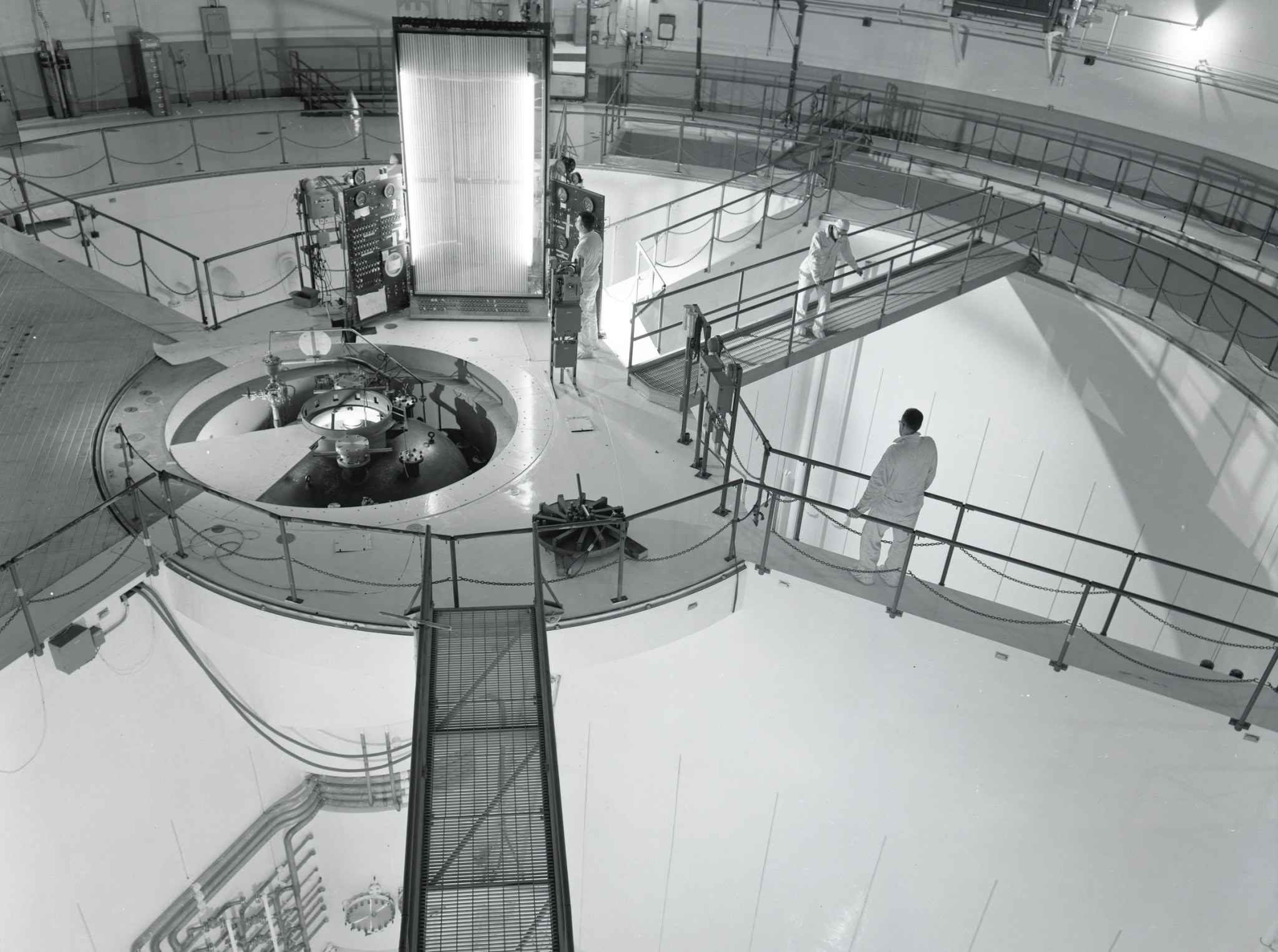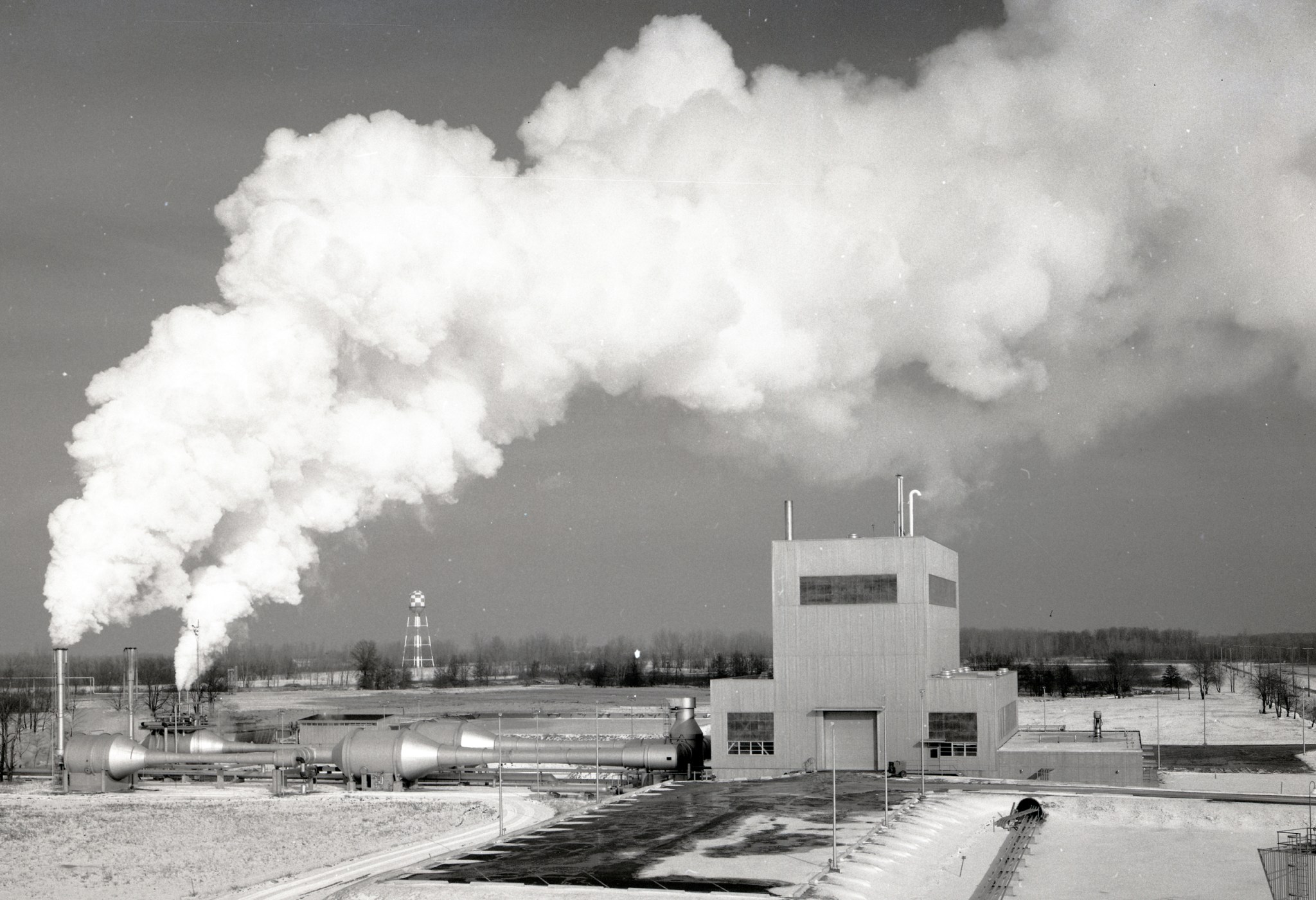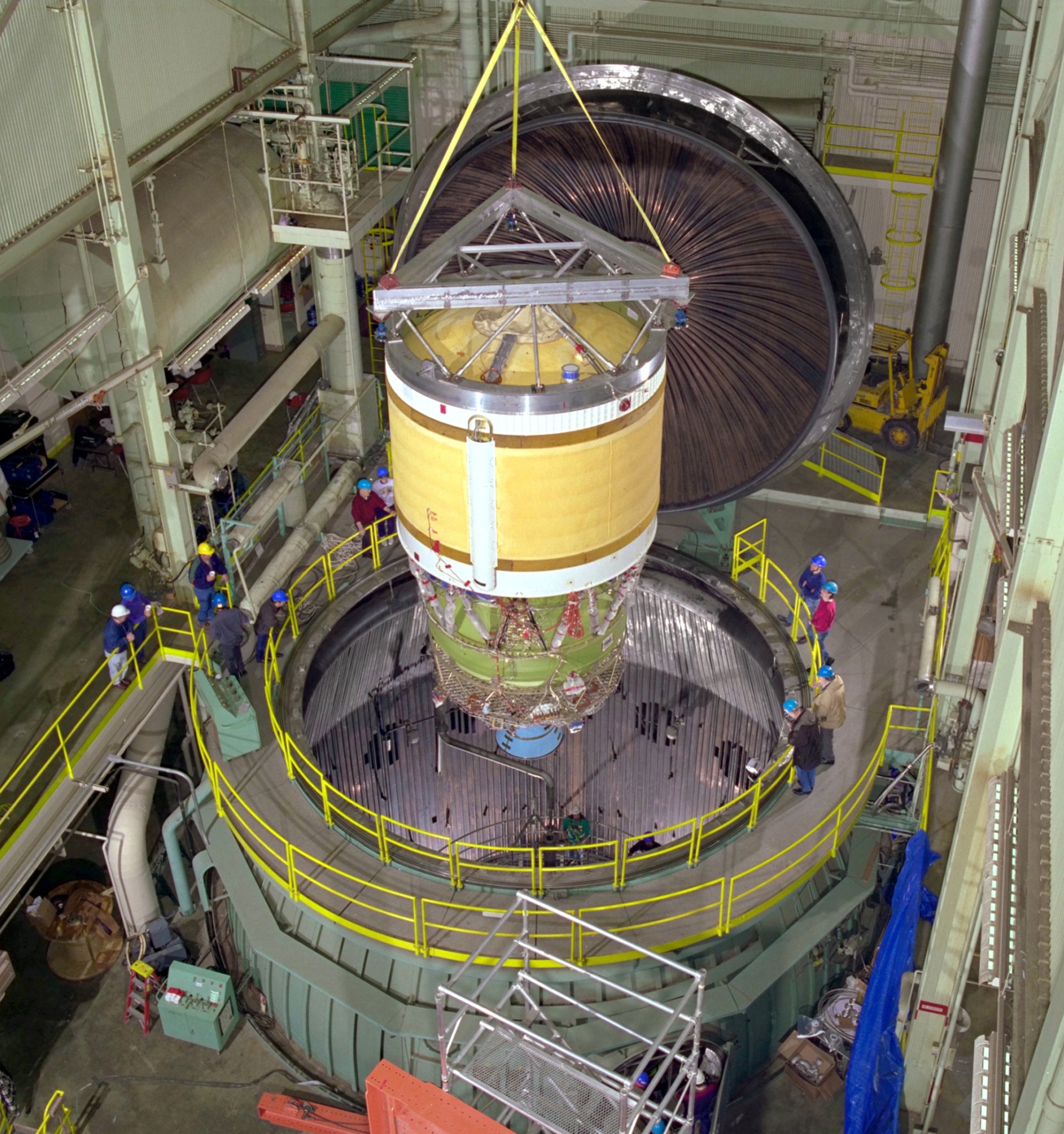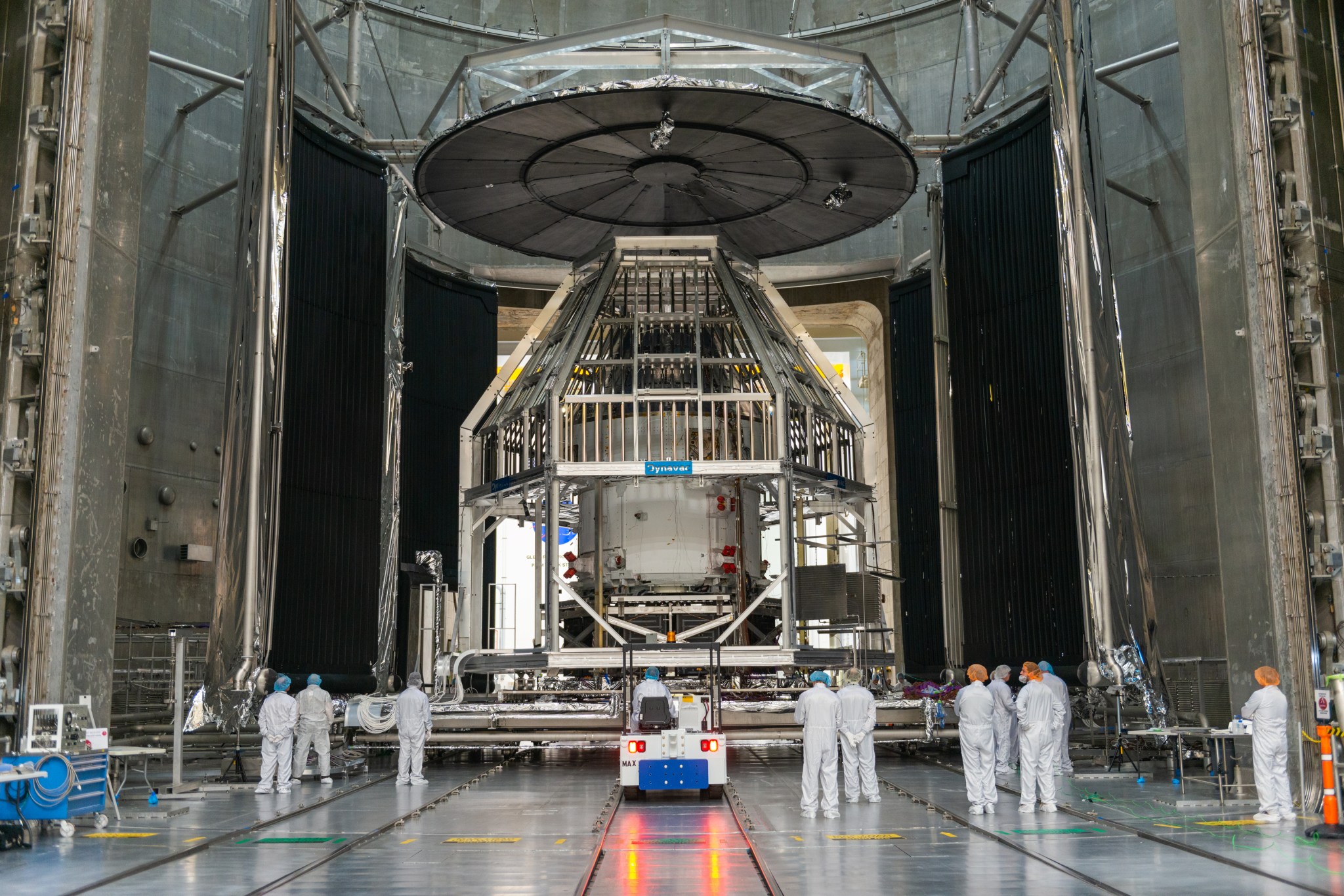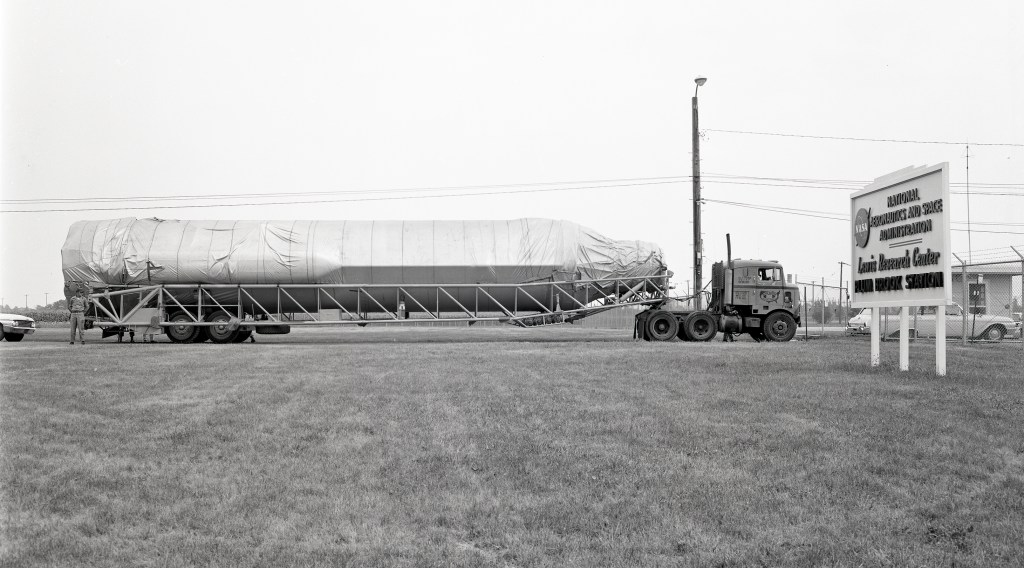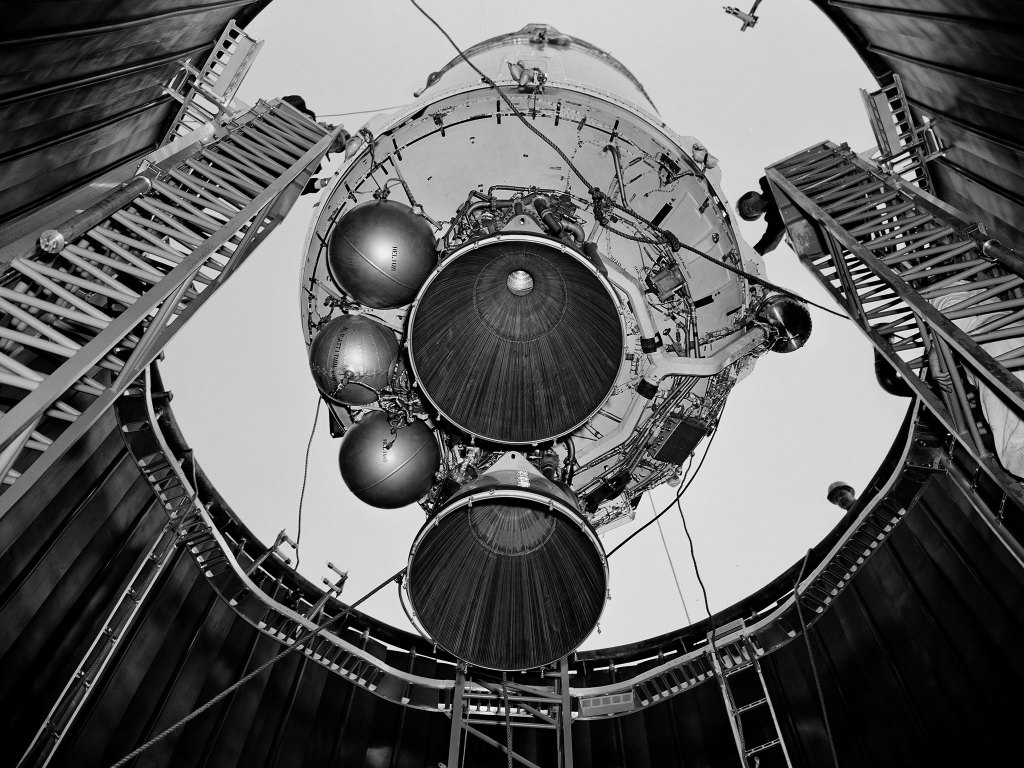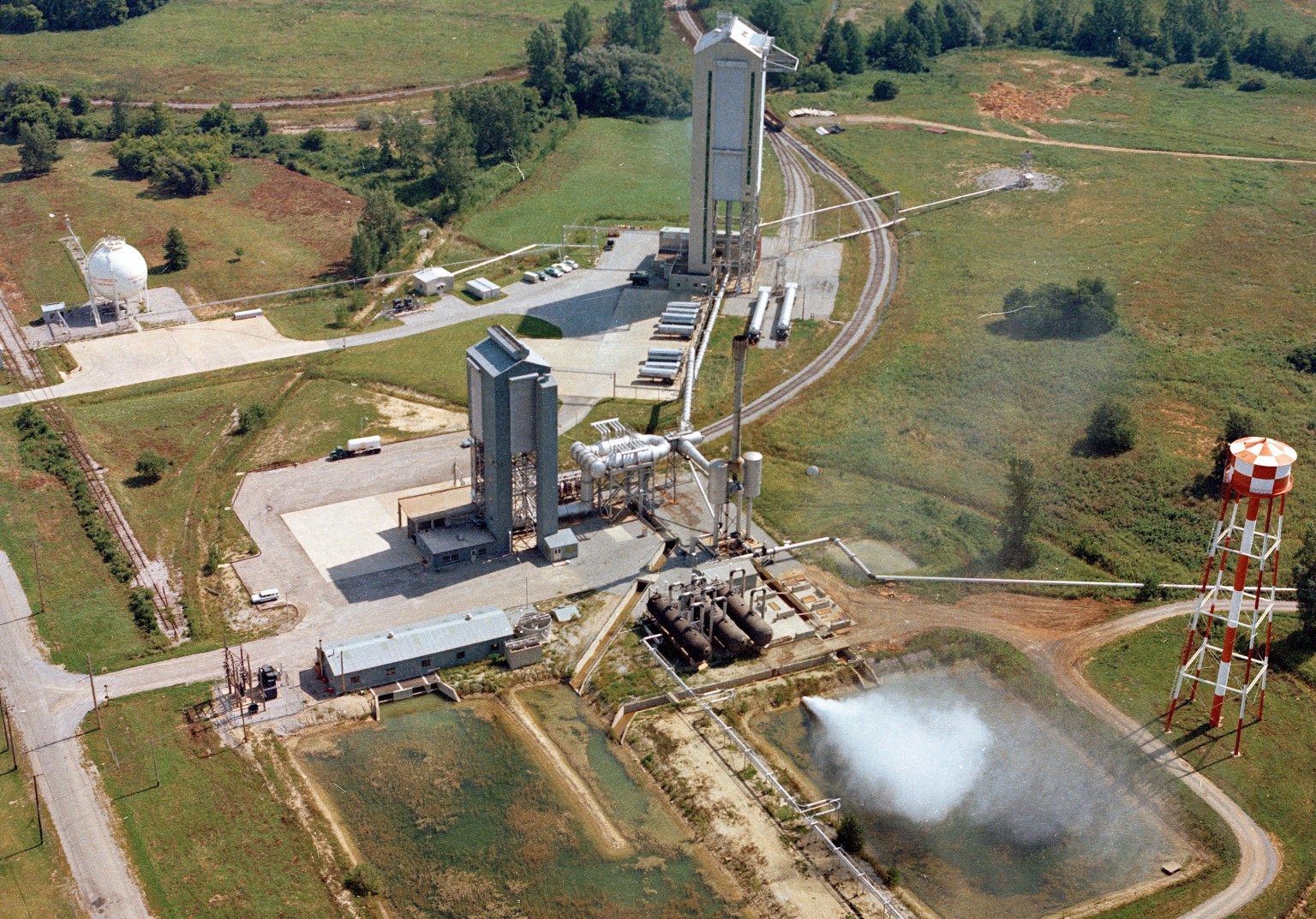
Armstrong Test Facility History
For over 60 years, NASA’s Neil Armstrong Test Facility (formerly known as Plum Brook Station) has provided researchers with a remote location to safely perform a wide array of testing to support the nation’s space program.
The National Advisory Committee for Aeronautics (NACA)’s Lewis Flight Propulsion Laboratory’s (today, NASA’s Glenn Research Center) has traditionally focused much of it research on propulsion systems. By the mid-1950s, most of its original 200-site acre in Cleveland, Ohio, which is bounded by an airport and a river valley, was occupied. The laboratory was forced to seek an alternate location when it sought to construct new facilities to support its nuclear and high-energy propellants work. A number of locations were reviewed before Sandusky, located 50 miles west of Cleveland, was selected. To read more about establishment of Plum Brook Station (today, NASA’s Neil Armstrong Test Facility), visit NASA’s Arrival in Sandusky, Ohio.
NASA has used Plum Brook’s 6,400 acres to test hydrogen rocket systems, the effects of radiation on materials, the storage of cryogenic propellants, and an extensive list of full-scale space hardware. The number of employees and facilities in operation at the station peaked during the 1960s. Agency budget reductions resulted in its closure for approximately 15 years in the mid-1970s and 1980s. Four of the largest, most important facilities were brought back online in the early 1990s and have subsequently been used by both NASA and external customers. Some of these facilities underwent extensive upgrades in recent years, while a number of the mothballed facilities have been removed.
Establishing the Sites
The NACA initially leased 500 acres at the Plum Brook Ordnance Works in 1955 site to construct the immense Plum Brook Reactor Facility. As construction progressed, the NACA leased a larger 2,725-acre area in 1958 to build a series of smaller chemical rocket test sites collectively referred to as the Rocket Systems Area. NACA engineers and inspectors regularly traveled from Cleveland to Sandusky during this period to oversee the construction which was taking place amongst the abandoned ordnance works structures.
By the time the reactor and many of the Rocket Systems Area sites were completed in 1961, there were several hundred employees permanently assigned to Plum Brook. The station was largely a service organization. The researchers at the center (renamed the Lewis Research Center in 1958) developed the test programs, and the Plum Brook staff prepared the facilities, ran the tests, and collected the data.
Lewis led NASA’s liquid hydrogen and nuclear propulsion and power activities in the 1960s. The agency had decided to use the high-energy, lightweight liquid hydrogen to fuel its new Centaur and Saturn upper-stage rockets, as well as proposed the Nuclear Engine for Rocket Vehicle Application (NERVA) stage. Nearly all Lewis’ nuclear-related testing was and most of its hydrogen work was carried out at Plum Brook. Despite this, the reactor was the only facility using fissionable materials.
On March 15, 1963, NASA permanently acquired the 3,200 acres it had been leasing along with Plum Brook’s remaining 2,800 acres and formally renamed the property Plum Brook Station. Many of the old Plum Brook Ordnance Works structures were burned down or razed at this point. Plans were already underway to construct several larger test facilities that would come online in the late 1960s, including the Cryogenic Tank Facility (K Site), the Hot Hydrogen Test Facility (HHTF), the Space Propulsion Research Laboratory (B-2), and the Space Power Facility (SPF). At its peak, Plum Brook contained 15 different facilities with at least 24 test rigs and cells.
Hydrogen Systems
Several of the Rocket Systems Area sites were designed to address the unique storage and pumping challenges associated with liquid hydrogen, which boils at -423 F. Lewis engineers used the smaller test sites to analyze rocket engine components before testing full engine systems at one of the larger test facilities.
One of the most pressing issues was designing the turbopumps that rotate thousands of times per minute to rapidly deliver hydrogen from the tank to the engine. Lewis researchers tested hundreds of different impeller designs and studied both universal aspects and specific pumps for the NERVA and Centaur programs. From 1964 to 1966, researchers used two vertical test stands, the High Energy Rocket Engine Research Facility (B–1) and Nuclear Rocket Dynamics and Control Facility (B–3), to test the startup systems and turbopump designs for a full-scale nuclear stage.
NASA engineers realized that long-duration space missions would require the storage of cryogenic propellants in space depots that require complex insulation systems to prevent evaporation. Various size tanks were installed inside K Site’s 18-foot diameter spherical vacuum chamber to study tank pressurization and various types of insulation. Extensive testing of a Cryogenic Storage Test Vehicle was conducted in 1973 and 1973 to investigate the simultaneous use of various tank protection systems.
Radiation Physics
After nearly two years of perfecting the fission process, the Plum Brook Reactor Facility reached its full 60-megawatt power level in 1963. The facility, NASA’s only reactor, was designed to determine the behavior of metals and other materials used to construct a nuclear-powered rocket after exposure to irradiation. The test specimens were shuttled into the core to receive a specified amount of radiation, then sent to thickly shielded “hot cells” where researchers remotely manipulated them to gather data on the radiation effects.
The reactor’s unique ability to subject test articles to radiation and cryogenic temperatures simultaneously was particularly applicable to the analysis of materials for nuclear rockets, which use liquid hydrogen as its propellant. The reactor was used to conduct experiments for both NASA and companies developing hardware for the NERVA, Systems for Nuclear Auxiliary Power–8 (SNAP–8), and other programs.
Space Hardware
Plum Brook also has a legacy of testing large pieces of hardware prior to their launch into space. The earliest example of this testing was conducted at the Dynamics Stand (E Stand) in the early 1960s. E Stand was a “shake tower” used to verify the structural integrity of missiles in simulated launch conditions. Lewis researchers used E Stand extensively to test the Atlas-Centaur vehicle, including a critical test of the vehicle under maximum loads and vertical vibrations prior to its first successful launch in November 1963.
In late 1969, both the B–2 and the SPF facilities became operational. SPF’s 100-foot-diameter, 120-foot-high tank is the largest high-vacuum chamber ever built. The SPF was initially used to test a Brayton Cycle space power system in vacuum conditions and several shroud jettison tests for the Titan-Centaur and Saturn IV-Skylab launch vehicles in the early 1970s. Although designed to test nuclear propulsion and power hardware, the SPF was never used for that purpose.
In the late-1960s NASA engineers began planning the Viking mission to Mars which required pairing the Centaur with the powerful Titan IV booster. This new launch vehicle necessitated the design of a new shroud to encapsulate the payload. Throughout 1973 an d1974, NASA engineers subjected this new Centaur Standard Shroud to a series of jettison tests in ambient conditions at the B–3 test stand followed by tests in vacuum conditions in the new SPF facility.
B–2 has unique ability to maintain a vacuum while firing rocket engines into a 120-foot-deep spray chamber. B–2 was the only facility in the world capable operating a full-scale rocket stage in a simulated space environment. Giant diffusion pumps reduce chamber pressure, a nitrogen-filled cold wall creates cryogenic temperatures, and quartz lamps replicate solar radiation. B–2 was used for extensively in the early 1970s to test a new generation of Centaur vehicles.
NASA also constructed the Hot Hydrogen Test Facility in the mid-1960s to test components of nuclear propulsion systems in high temperatures. Engineers were still attempting to get the facility operational when they were asked to convert it into a hypersonic wind tunnel to test NASA Langley’s Hypersonic Research Engine. The facility’s (renamed the Hypersonic Tunnel Facility) testing of this water-cooled, liquid hydrogen-based engine throughout 1973 and 1974 provided the first demonstration of the complete scramjet engine system.
Idle Years
Congress reduced NASA’s budget in the early 1970s while pushing for the development of a reusable shuttle vehicle. In order to fund the shuttle, NASA terminated long-range research projects, including its nuclear propulsion and power efforts. In early 1973, Lewis was ordered to conclude Plum Brook’s existing test programs and mothball the reactor and other facilities. The center’s efforts to find external organizations to utilize the Plum Brook facilities were unsuccessful. By 1975 there were only a handful of NASA employees at the station to maintain the shuttered facilities.
During this period, NASA Lewis sought alternative ways to use its aerospace expertise, including partnering with other federal agencies to improve technologies that would improve life on Earth. In 1975 the center decided to use the wide-open spaces at Plum Brook to construct an experimental wind turbine as part of a NASA/Energy Research and Development Administration (ERDA) program to develop large horizontal-axis wind turbines. The Plum Brook device, referred to as Mod-0, provided researchers with experience operating wind turbines and the opportunity to test new blade, rotor, and tower designs. NASA and ERDA engineers used the data to construct a series of much larger experimental wind around the nation. The program continued until 1985.
NASA also granted the Garrett Corporation permission to utilize the massive interior of the SPF from 1980 to 1985 to test manufacturing processes for gas centrifuges. Plum Brook’s other test facilities remained idle during this period.
Restoration
In the early 1980s, the Office of Management and Budget recommended that NASA dismantle the facilities at Plum Brook and the transfer of the property. In response, an interagency team assessed these findings and concluded that B-2, SPF, HTF, and K Site should be brought back online as needed and operated on a pay-for-service basis. NASA concurred with the assessment and began restoring the B-2 and SPF facilities in 1987 with K Site and HTF shortly thereafter.
B–2 was initially used to test space plasma experiment experiments in vacuum conditions. In the mid-1990s, B–2 was used to perform engine chilldown and ignition testing of Boeing’s new cryogenic upper-stage rocket, the Delta III. In 1998, the Delta III was successfully hot fired in B–2’s simulated space environment. It was B–2’s first propulsion test since the early 1970s.
In the 1990s, the SPF vacuum chamber was used to conduct shroud jettison tests for the Atlas, Titan IV, and Ariane rockets. In addition, NASA used the facility to test a unique airbag landing system for the Mars Pathfinder mission and a large solar radiator for the International Space Station power system.
The HTF facility was brought back online from 1990 to 1993. Its testing of scramjet inlets in 1996 ended in a catastrophic failure that required extensive rebuilding and upgrading of the facility. By the time the modifications were completed in 2000, national interest in hypersonic propulsion had faded. The facility was placed into standby status in 2007.
K Site’s reactivation began in 1988 to support the Nationals Aerospace Plane Program (NASP). The addition of a large slush hydrogen generator the following year allowed the facility to conduct the most significant slush hydrogen studies to date. NASA’s 2004 plan to return to the Moon and send humans to Mars required new technologies, some of which had been examined in previous decades at Plum Brook. One such area was the handling of cryogenic fuels in space. The Cryogenic Components Laboratory was moved from the center in Cleveland to Plum Brook Station in 2008. The facility conducted several cryogenic fluid storage tests for NASA’s Constellation Program between 2008 and 2011.
Current Activities
In recent years, NASA has embarked on a process to reduce its physical footprint across the agency by systematically removing unused facilities. In 1998, NASA began the long, costly process of decommissioning the Plum Brook Reactor Facility. This required the safe removal and disposal of contaminated materials from the site before actual demolition took place. The project was completed in 2012. NASA also removed the small Rocket Systems Area sites from 2004 to 2010. K Site was demolished in 2012, but its large spherical tank was repurposed as the Combined Effects Chamber. Test programs for this facility never materialized. In 2014, many of the former ordnance works bunkers were removed. In November 2015, a new gate was opened on Scheid Road.
The SPF underwent major modifications in the 2010s to support testing for the Constellation Program. The new features included the world-class Reverberant Acoustic Test Facility and the Mechanical Vibration Facility. The upgraded facility, renamed the Space Environments Complex, allows space vehicles to simulate the vibrations, sounds, temperatures, and pressures encountered during space missions. In early 2020, Glenn tested the Orion spacecraft for eight weeks in the vacuum, low temperatures, and radiation of space.
NASA has also refurbished the vacuum pumps, space simulation hardware, and data acquisitions systems at B–2. In the summer of 2018, the facility, which was renamed the In-Space Propulsion Facility, was used to conduct non-propulsive testing of SpaceX’s large Crew Dragon vehicle. The tests verified the spacecraft’s ability to function in a simulated space environment prior to its first uncrewed demonstration flight in March 2019.
Additional Resources
- NASA’s Nuclear Frontier: The Plum Brook Reactor Facility (SP-2004-4533, 2004)
- Science in Flux: NASA’s Nuclear Program at Plum Brook Station 1955–2005 (NASA/SP-2006-4317)
- NASA’s Hydrogen Outpost: The Rocket Systems Area at Plum Brook Station (NASA SP-2016-628)
- Rocket Systems Area: Historic Facility Website
- Of Ashes and Atoms: Video documentary on the Plum Brook Reactor.
- NASA’s Neil A. Armstrong Test Facility: Current facility website.
NASA's Arrival in Sandusky
In the mid-1950s, the NACA sought a remote location to safely conduct testing for what is today NASA’s Glenn Research Center in Cleveland, Ohio. Following a multi-state search, officials opted for a former ordnance manufacturing complex in Sandusky to build Plum Brook Station (today, NASA’s Neil Armstrong Test Facility).
Learn More





























